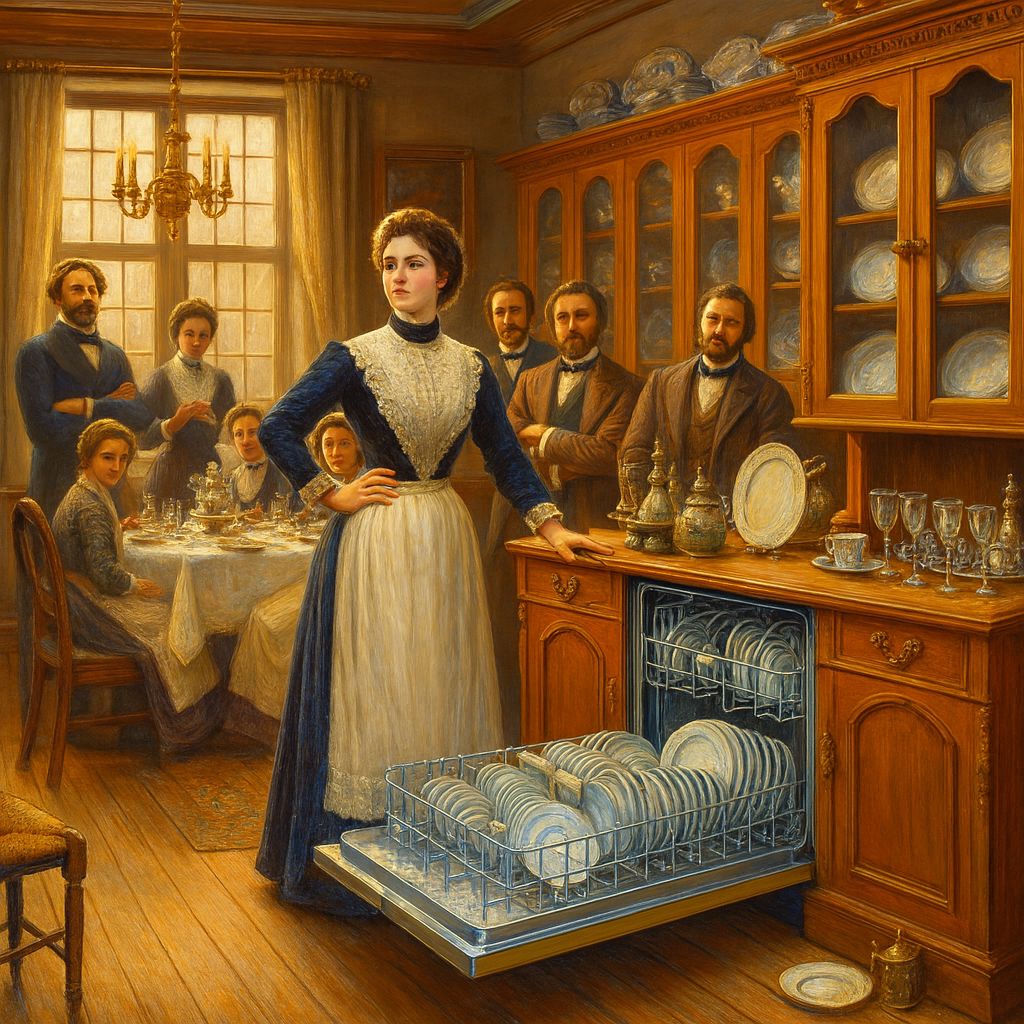
For the Inventor. By the Inventor.
See this week's breakthrough USPTO patent grants!
The Simplest Way To Create and Launch AI Agents
Imagine if ChatGPT and Zapier had a baby. It’d be ridiculously smart… and probably named Lindy.
With Lindy, you can spin up AI agents in minutes to handle all the stuff you’d rather not—like lead qual, cold outreach, web scraping, and other “ugh” tasks. It’s like hiring a whole team that never sleeps, never complains, and never asks for PTO.
Lindy’s agents are ready to take on support tickets, data entry, lead enrichment, scheduling, and more. All so you can get back to the fun part: building your business.
Ready to hand off the busy work? Build your first AI agent today and join thousands of businesses already saving time (and sanity) with automation that actually works.
Table of Contents
This Week's Inventor and Patent News:
🪙 Black Pill Capital Launches Bitcoin Hedge Fund Blending Institutional Discipline with Bold Innovation. Two of Black Pill’s co-founders are Jeff Grant, a Centurion Inventor with 116 patents and David Berglund with 75 patents.

🧠 Rex Medical v. Intuitive Surgical. Rex Medical appealed a district court’s decision to reduce its $10 million damages award to just $1 in a patent infringement case involving surgical stapler technology. The court had excluded expert testimony on licensing value, prompting Rex to argue that its patent was central to the licensing deal and deserved a retrial.
⚖️ Sonos v. Google: Laches Revisited. The Federal Circuit partially reversed a lower court ruling, reviving Sonos’ claims against Google. The court found that the district court misapplied the doctrine of prosecution laches, which had previously invalidated Sonos’ media playback patents due to alleged delays in filing.
📜 AI Artist Challenges Copyright Denial. Jason M. Allen filed a motion in Colorado federal court to overturn the Copyright Office’s refusal to register his AI-generated artwork. The case could set precedent for how AI-assisted creations are treated under U.S. copyright law.
🤖 Unitree Robotics Sued in China. Unitree Robotics, known for its robotic dogs, was sued by a local chemical company in Hangzhou for alleged patent infringement. The lawsuit coincides with Unitree’s IPO preparations, raising stakes for the company’s public image and valuation.
New weekly USPTO Patents data have been added.
Entity Type / Patent Type | Large (> 500 Employees) | Small (≤ 500 Employees) | Micro (Small Entity) |
Utility | 4,592 | 1,383 | 131 |
Design | 476 | 412 | 217 |
Plant | 5 | 0 | 0 |
*Where one patent can have more than one assignee, Entity data assignment as of August 26, 2025
🍽️Josephine Cochrane and the Dishwasher: A Socialite’s War on Dirty Dishes
Josephine Cochrane: The Socialite Who Declared War on Dirty Dishes and Won
In the grand theater of 19th-century domestic life, few villains loomed larger than clumsy dishwashers, particularly the human variety. Josephine Cochrane, a wealthy Illinois socialite, had a problem: her prized fine china was under constant siege by well-meaning but heavy-handed servants. Rather than resign herself to a future of cracked porcelain and polite despair, Cochrane did what any brilliant mind would: she declared war on manual dishwashing.

In 1886, she patented the first practical automatic dishwasher, a machine that didn’t rely on careless human hands but instead used high-pressure water jets to do the job correctly. Unlike previous attempts at mechanized dishwashing, which were little more than elaborate rinsing stations, Cochranes design cleaned dishes efficiently. She famously remarked, If nobody else is going to invent a dishwashing machine, I’ll do it myself! which, in retrospect, sounds like the tagline to an action-packed inventor biopic.
At first, the world wasn’t quite ready to embrace her innovation. Home kitchens of the time lacked plumbing capable of handling such a machine, so the dishwasher initially found its niche in restaurants and hotels, where overworked staff saw it as nothing short of a miracle. Eventually, as households modernized, Cochrane’s invention became a kitchen essential, sparing generations from the tyranny of dishpan hands.
Today, every post-dinner cleanup owes its convenience to a determined woman who refused to let dinnerware suffer at the hands of the uncoordinated. Josephine Cochrane didn’t just clean up a mess, she changed history.
Josephine’s war on dirty plates gave us the dishwasher. What other forgotten inventors reshaped our daily lives? That’s the kind of history we uncover every week. Subscribe now and never miss a story worth telling at your next dinner party.
Used by Execs at Google and OpenAI
Join 400,000+ professionals who rely on The AI Report to work smarter with AI.
Delivered daily, it breaks down tools, prompts, and real use cases—so you can implement AI without wasting time.
If they’re reading it, why aren’t you?
Trivia
🎞️ Which famous inventor came up with the idea for instant photography after his young daughter asked why she couldn’t immediately see the picture he had just taken?
A. George Eastman
B. Edwin Land
C. Thomas Edison
D. Ansel Adams
Please scroll to the bottom of this newsletter to find out.
Featured Inventor
Wayne Westerman: The Quiet Godfather of the Touchscreen Revolution
Wayne Westerman didn’t set out to change the way the world types, taps, and scrolls. He just wanted to give his wrists a break.
Struggling with tendonitis as a grad student in the late 1990s, Westerman, along with his advisor, John Elias, began developing a solution that would let users gesture, type, and navigate computers with minimal strain. What emerged was FingerWorks, the first commercial multitouch typing and trackpad system. Funded partly by an NSF fellowship and partly by sheer ergonomic desperation, FingerWorks catered to RSI sufferers and power users with its futuristic interface, years before “pinch-to-zoom” became a cultural reflex.

In 2005, Apple quietly acquired FingerWorks, and Westerman’s algorithms soon became the invisible backbone of modern life. iPhones, iPads, Apple Watches, Magic Mice, and Apple TV remotes all owe their silky multitouch precision to his pioneering work. His team’s gestures, once niche and nerdy, are now second nature worldwide.
But Wayne didn’t stop with touch. During the pandemic, he pivoted again, this time to clean air. A passionate advocate for energy-efficient, DIY air purification, he helped unite engineering dads on Twitter into CleanAirKits, promoting Corsi-Rosenthal boxes built with PC fans and cardboard.
While Steve Jobs got the stage and the spotlight, Westerman remains the inventor’s inventor, quietly brilliant, wrist-friendly, and very likely the reason your thumbs haven’t fallen off.
🖐️ So the next time you tap, thank Wayne, the multitouch messiah who just wanted to ease a little pain.
Choose the Right AI Tools
With thousands of AI tools available, how do you know which ones are worth your money? Subscribe to Mindstream and get our expert guide comparing 40+ popular AI tools. Discover which free options rival paid versions and when upgrading is essential. Stop overspending on tools you don't need and find the perfect AI stack for your workflow.
Today in Patent History
🎥📡 Sony’s 1997 Patent on Picture Signal Encoding and Decoding Methods
On September 2, 1997, Sony was granted a U.S. Patent for a "Picture signal encoding method and apparatus and picture signal decoding method and apparatus." This innovation focused on simplifying the complex hardware behind digital video processing, making it possible to handle encoding and decoding with fewer resources. By reducing the scale of multipliers and using clever shift operations, Sony’s engineers streamlined how picture signals were processed, a behind-the-scenes improvement that quietly shaped the efficiency of digital video systems we now take for granted.

U.S. Patent No. 5,663,763
Introducing New Data Products and Enhancements
Centurion Patentors
Congratulations to last week's Centurion Patentors!
We are excited to welcome the following inventors into these prestigious patent clubs:

Trivia
Answer: B. Edwin Land 💡
👉 In 1943, while on vacation, Land’s 3-year-old daughter innocently asked why she couldn’t see a photo right away. That question sparked his imagination and led to the creation of the Polaroid instant camera, first sold in 1948. A child’s curiosity turned into one of the most iconic innovations in photography.
Recommendations
SPONSORED

The Next Mining Unicorn?
Imagine an opportunity so significant, it could redefine wealth generation in the mining sector. We're talking about a Lithium Salar twice the size of the biggest known deposit in the world poised to deliver unprecedented returns.
This isn't just another mining venture; it's a potential stock multiplier unlike anything currently available, with returns expected in as little as six months.
Our newly identified Lithium Salar represents an extraordinary supply answer to this escalating demand. Its sheer scale offers a strategic advantage, minimizing extraction complexities and maximizing output potential.
Any claims made in advertising content are not researched, verified, or endorsed by IDiyas.




